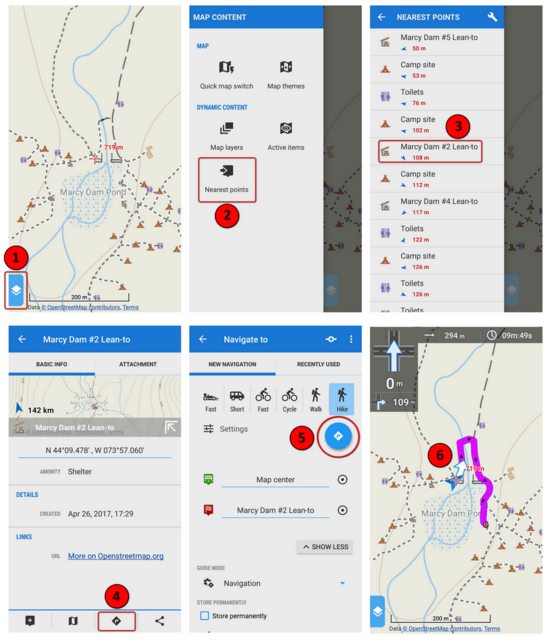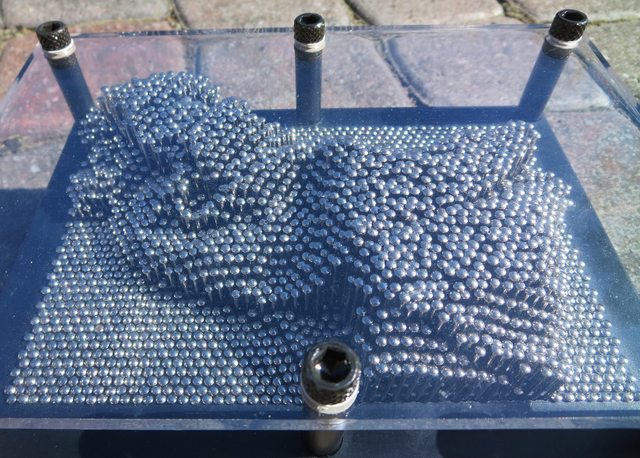I've compared the feature set provided by GAIA GPS and even the free Oruxmaps is comparable to it. In fact, some features found in GAIA's
pro version are available in Oruxmaps. If you are an existing GAIA GPS user then you have reason to use its Android version (familiarity). Otherwise, there are superior Android alternatives available. Many exceed GAIA's capabilities for less money.
It's easy to get bogged down in a "feature war" discussion. However even the most "feature complete" app
may not be right for everyone. What seems perfect for one person may not be ideal for another. Sometimes a seemingly insignificant feature is what makes you choose one app over another. All six of the Android apps I tested were available in a free version (one developer even gave me a free license to test his app thoroughly). Therefore you can test-drive them and decide what is the best fit for you.
If you don't want to go through this process then here's my experience with it. I used Alpinequest for about 6 months. I selected it over all others (including the long-reigning Backcountry Navigator) because of the breadth of available maps, speed of operation, refined and intuitive UI, comprehensive documentation, and the developer's receptiveness to suggestions. Six months of use opened my eyes to the features I wanted (and the ones I didn't). I switched to Locus Map primarily because:
1) It supports vector maps.
I didn't realize the advantage of a vector map until I started using
OSMand+ (what iAmKrzys mentioned) for driving. At the time I used OSMand, its support for GPX files was rudimentary (it has been improved) and the product lacked certain features needed for proper backcountry navigation. However, it opened my eyes to searchable POI's stored in the map and all in a very compact file size. Vector maps support "themes". Themes control what is displayed on the maps so only relevant information is present for the chosen activity.
http://docs.locusmap.eu/doku.php?id=manual:user_guide:maps_locusmaps#map_themes
2) Total ascent can be calculated using a Digital Elevation Model (DEM).
This was an important feature for me. Calculating total ascent using GPS altitude data is not without problems. In my experience, the algorithms used to "smooth" the data, to produce realistic values, would often produce overinflated results (my reference was many trips recorded with a barometric altimeter). If your phone has a barometric altimeter, many navigation apps can use it for altitude measurements and calculate a more realistic total ascent. However, my phone does not have this sensor. Locus Map can calculate a track's total ascent using a DEM (SRTM - Shuttle Radar Topography Mission). You can choose to have the DEM completely
replace the GPS-recorded values for altitude (this is how I use it) or just use the DEM to
optimize the recorded values.
http://docs.locusmap.eu/doku.php?id=manual:user_guide:tools:altitude#srtm_data
3) It can do offline auto-routing.
Offline auto-routing is the ability to create a route, from one place to another, without an internet connection. Locus Map does this using BRouter which is a free app. The connection between the two apps is seamless.
http://docs.locusmap.eu/doku.php?id...lanning#offline_planning_a_route_with_brouter
4) It offers verbal progress reports and navigation guidance.
During my walks in the neighborhood, and on my hikes, I like having Locus Map verbally report my progress (Audio Coach). You can configure what it says and when it says it based on the activity. For hiking, I have it tell me my progress (distance and elevation gain) every hour. For walking, it reports speed, distance, and elevation gain every half-hour. It can also verbally guide you when you are in navigation mode.
http://docs.locusmap.eu/doku.php?id=manual:user_guide:tracks:recording:trainingmanager
5) Superior management of tracks and POIs.
Locus Map provides excellent management of all the tracks and POIs you will eventually record. You can sort by various parameters, perform operations on one or more tracks, etc.
http://docs.locusmap.eu/doku.php?id=manual:user_guide:tracks:management
One feature I use regularly (and transparently) is "Presets". You define how you want Locus Map to appear and behave for each of your activities. When you switch from (say) Hiking to Cycling, Locus Map's appearance and operation will be tailored for it. When I select the Hiking preset, the GPS recording rate is set appropriately, the Audio Coach is set for hiking, certain menus appear/disappear, and the track will be stored in the Hiking folder.
Here are a few other features that you might find handy (or gimmicky). Some of them are optional and can be enabled/disabled.
The compass also shows you the position of the sun.
http://docs.locusmap.eu/doku.php?id=manual:user_guide:tools:gps#compass
Nearest points. You can have Locus Map display a list of POIs sorted by distance from your current position. Select a POI to display it on the map then (optionally) have Locus Map guide you to it.
http://docs.locusmap.eu/doku.php?id=manual:user_guide:mainscr_lpanel#nearest_points
Touch the map with two fingers and it'll show you the distance between the two points (and optionally the bearing).
http://docs.locusmap.eu/doku.php?id=manual:user_guide:functions:measure
Speed auto-zoom. The map's zoom-level is automatically adjusted based on your speed. Map zooms in when you're moving slowly and out when fast. You predefine the thresholds for speed and zoom-level.
http://docs.locusmap.eu/doku.php?id=manual:user_guide:maps_settings:misc#speed_auto-zoom
Distance/time rings. It can display concentric circles around your current position. Each circle either represents the estimated travel time (based on your current speed) or the distance from your current location.
http://docs.locusmap.eu/doku.php?id=manual:user_guide:maps_settings:misc#speed_auto-zoom
Weather forecast. It can report the weather forecast for the area currently displayed on the map (you have to have an internet connection). The developer plans to store a basic weather forecast with a recorded track. You'll be able to look back at a track and see what the weather conditions were like at the time.
http://docs.locusmap.eu/doku.php?id=manual:user_guide:functions:weather
PS
If you enjoy geocaching, Locus Map provides extensive support for this activity.
http://docs.locusmap.eu/doku.php?id=manual:user_guide:geocaching:gc_in_locus


